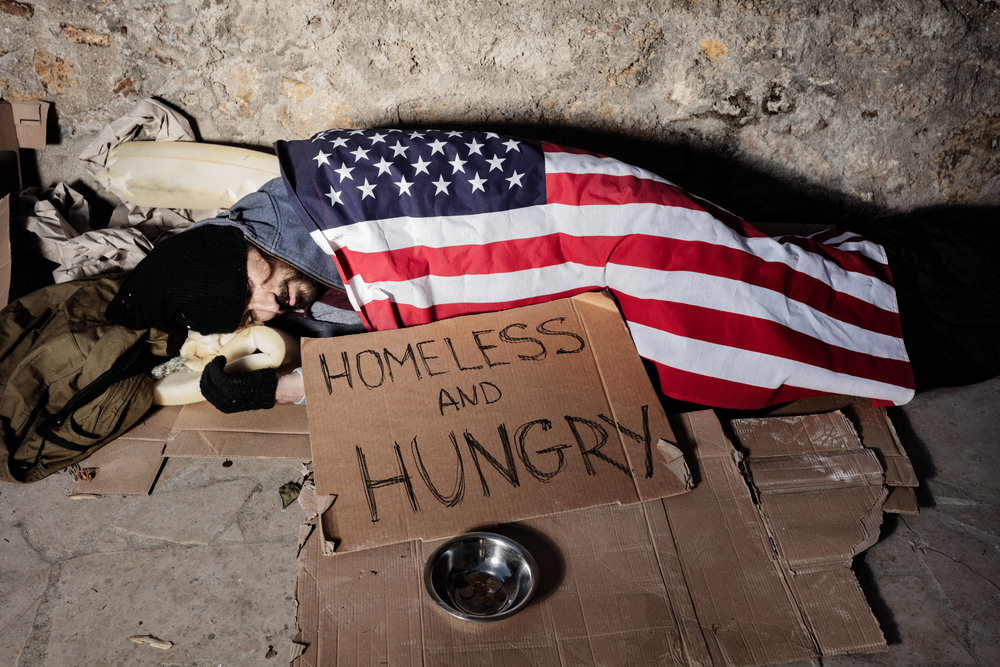A new article, published in JAMA Psychiatry, examines how deaths of despair, such as suicide or alcohol/drug overdoses, and rising obesity contribute to increased mortality rates for adults in the United States. The authors use a neuroscientific and anthropological lens to understand why mortality rates are increasing in the US versus other wealthy nations, like Canada, Australia, and Japan, where mortality rates are decreasing.
They examine the protective factors, specifically communal support, such as access to affordable education and childcare, that is provided in these countries and recommend that the U.S. adopt these practices to decrease despair and reduce the mortality rate.
The authors, led by Dr. Peter Sterling of the Department of Neuroscience at the University of Pennsylvania, referencing the US National Academy of Sciences (NAS) reports of rising mortality, write:
“The NAS report repeats that despair ‘…is not a clinical diagnosis.’ However, the question remains, on the contrary, how can despair not be a clinical diagnosis? Is it surprising that individuals blocked by cumulative insurmountable difficulties might conclude that suicide is the only way out or else prolonged self-annihilation by drugs or rich food? How could these behaviors be described other than as despair-related? In what way does the simple enumeration of these deaths not constitute a validated measure of despair?”
 Life expectancy in the U.S. has declined since 2014, with white adults living in rural areas experiencing the largest increase in mortality rates compared to individuals of other backgrounds. Deaths of despair, such as suicide, drug poisoning with alcohol and other drugs, and tobacco use, are major contributors to increased mortality rates. Additionally, deaths related to health problems caused by obesity, such as metabolic and cardiac issues, also contribute to the decrease in life expectancy.
Life expectancy in the U.S. has declined since 2014, with white adults living in rural areas experiencing the largest increase in mortality rates compared to individuals of other backgrounds. Deaths of despair, such as suicide, drug poisoning with alcohol and other drugs, and tobacco use, are major contributors to increased mortality rates. Additionally, deaths related to health problems caused by obesity, such as metabolic and cardiac issues, also contribute to the decrease in life expectancy.
The authors highlight similarities between deaths of despair and deaths due to metabolic or cardiac issues, describing how obesity can be caused by overeating which contributes to hypertension, and Type 2 Diabetes, much like smoking can lead to heart disease.
They also compare overeating to substance addiction, as both result in a release of dopamine, which is a neurotransmitter in the brain that causes pleasurable feelings. Additionally, like deaths of despair, obesity is distributed across geographical, educational, and financial lines. When combined, deaths of despair and metabolic and cardiac deaths exceed deaths caused by cancer four times over.
Sterling and colleagues explore the cause of rising despair from an anthropological perspective, examining how the hunter-gatherer lifestyle depended on unpredictability (which can result in unexpected surges of dopamine), strong bonds, cooperation between family and the community-at-large, and high levels of exercise.
As a result of the active lifestyle that being a hunter-gatherer required, obesity levels and blood glucose levels were low; illnesses like type 2 diabetes, hypertension, and cardiovascular disease were largely non-existent.
Contrasting this lifestyle with modern, Western life, our lives are largely predictable in that generally speaking, we do not have to forage or hunt for food but can access it through a quick trip to the grocery store. We are also more isolated and therefore have less opportunity for collaboration and cooperation, resulting in less opportunity for dopamine pulses.
A consequence of this is that some individuals turn to drugs and alcohol as they provide large surges of dopamine, surges which decrease as the dopamine receptors in the brain adapt to higher levels, which in turn results in “addiction,” which the authors describe as: “not a true disorder but rather a predictable consequence of losing a key condition for health.”
Companies exploit the need for dopamine pulses for financial gain, such as through the promotion of opiates by pharmaceutical companies.
In addition to major differences in daily life, there have been significant changes across the lifespan when comparing the modern US lifestyle to our hunter-gatherer ancestors. For example, the family structure typically consisted of parents and grandparents working together to care for and teach children and young adolescents crucial survival and professional skills. In contrast, presently, in the US, the cost of childcare and post-secondary education is sky-rocketing and out of reach for those lacking financial resources and familial support.
Moreover, activities such as play, art, music, and literature were valued and made time for in hunter-gatherer societies. In the US, having the time to engage in these activities is considered a luxury. No US laws mandate vacation time, and federal holidays do not mandate payment. While some individuals are privileged enough to have jobs that provide paid time off, 13 million U.S. workers hold more than one job to survive, and 25% of U.S. workers in the private sector do not receive any paid time off. These individuals are the most stressed and have the lowest income, negatively impacting child development like slower brain growth.
How do we begin to address these issues in the US to allow for more support, which would reduce the mortality rate? The authors point to 16 industrialized, wealthy nations, including Japan, New Zealand, Canada, and Portugal, as holding potential answers.
They highlight how all 16 nations support prenatal and maternal care, including mandated maternal leave, which does not exist in the US. The 13 European nations included by the authors all provide access to affordable preschool and higher education. Public school education in these countries is funded at the national level as opposed to local property taxes, leading to fewer issues with school inequalities as are present in the US.
In addition, all 16 nations have affordable health care and mandate an average of 30 days of paid time off, allowing for a better balance between work and leisure time. The individuals in these nations benefit from the support provided, as research shows they are leaner, more energetic, and struggle less with addiction and suicide. Overall, investing in social services has improved health outcomes, including increasing life expectancy.
Sterling and colleagues recommend that the US adopt the policies of the 16 nations to provide prenatal care, maternal leave, affordable health care, preschool, affordable access to quality primary and post-secondary education, and paid time off, all of which would assist with reducing some of the stressors placed upon US families which in turn would benefit their overall physical and psychological health.
Research elsewhere has shown that providing social welfare, such as access to food, transportation, affordable medication, and housing, can save billions of dollars in health care costs.
They conclude by emphasizing that one of the major barriers to following through with their recommendations is medicalizing the causes of rising mortality, framing them as individualized disorders, like depression or substance addiction, rather than as societal issues. The authors caution that attempting to treat these issues with drugs will only cause further despair and argue that large-scale changes need to be made to address rising despair in the US adequately.
****
Sterling, P., & Platt, M. L. (2022). Why deaths of despair are increasing in the US and not other industrial nations –Insights from neuroscience and anthropology. JAMA Psychiatry. DOI: 10.1001/jamapsychiatry.2021.4209 (Link)















Dear Ashley, there’s one thing you haven’t mentioned. The USA is a country addicted to fast food, I think they actually defended it worldwide from being exposed (see court case against whether Mc Donalds is healthy), and it seems people in the US are more accustomed to picking up their food somewhere where they can skip going to the kitchen themselves. Which is an art form [kitchen work] as well as the rest that you mentioned.
I’m quite a fanatic in the kitchen, but it’s only now, after having my own place for 13 plus year that I’m able to maneuver in the kitchen feeling comfortable at home there. For example making bread (sourdough) or also fermenting anything with too much phytic acid (ferment from raw peanuts on blanched ones that are easier to get now) to augment veggies, fruits and dairy produce. But what really gets me is that in foster care facilities, in soup kitchens, in boarding schools and even in jails, making their own meals seems to be left to people who…….
And those are often the lowest paid jobs. A professor at a college, a minister, a computer programmer, a thief for Monsanto and the rest all get WAY too much money in comparison to kitchen workers.
And I bet that most of the people despairing as to what to do, were they given a chance to play around with even the stuff that wall street sends into the fires, in order to keep the prices up [see here: where they lied about natural disasters https://www2.ohchr.org/english/issues/food/docs/Briefing_Note_02_September_2010_EN.pdf or how the government actually pays to have food destroyed, when it would bring down the price, and then there’s by some miracle the fact that gas https://www.investopedia.com/articles/economics/08/gas-prices.asp it isn’t considered a commodity, so there’s no futures on it… but there’s THAT also, alternative ways of providing for transportation. Think of all of the old Hobos (the ones poor Ernst Hemingway knew, and how he ended up quipping about shock therapy being such a great cure that one lost the patient, and didn’t have enough neurological matrix left to mention that then it’s even greater, one can say that it should have been implemented earlier)…. think of them being given the chance to play around with new ways to transport oneself, and those who are set up in a foster care, offered a cupcake a pat on the head, and denied access to making their own meals, new things to do with food that isn’t mainstream FDA approved dietary pillage…..
Imagine that the people, all of them, that they were allowed to play around with news ways of [as in for-give zero point over unity the fish and the loaves ) doing all sorts of things…..
Report comment
Fast food may have its dangers, but it’s not fast food that’s killing us. It’s drugs, plain and simple; especially the prescribed psychiatric drugs, in addition to illegal drugs like fentanyl, other opiates, crack, cocaine, the psychedelics and even marijuana. There are other drug-like “things” that also shorten life spans. Psychological coercion on some many levels from bully, gaslighting, etc. also contributes. In my opinion, psychology and psychiatry, etc. might be the biggest contributor to shortening the life span of Americans and others around the world. They underlie and underpin so much of that which causes despair. Not even fast food can hold a candle to their extant of their evil. Thank you.
Report comment